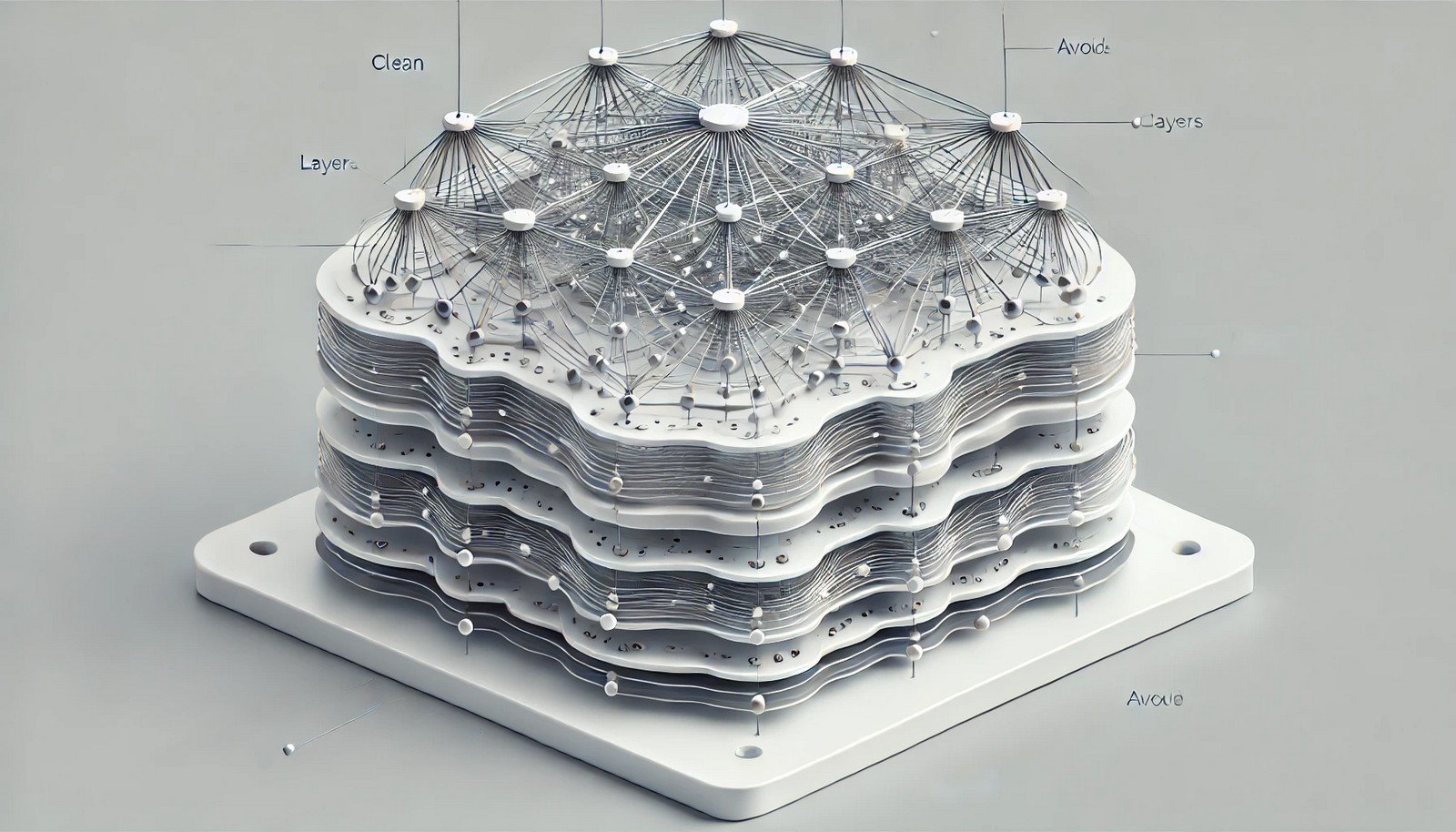Neural Network Architecture

Quick Navigation:
- Neural Network Architecture Definition
- Neural Network Architecture Explained Easy
- Neural Network Architecture Origin
- Neural Network Architecture Etymology
- Neural Network Architecture Usage Trends
- Neural Network Architecture Usage
- Neural Network Architecture Examples in Context
- Neural Network Architecture FAQ
- Neural Network Architecture Related Words
Neural Network Architecture Definition
Neural Network Architecture refers to the structure of a neural network, including its layers, connections, and parameters that determine how data is processed. This architecture includes layers of nodes (neurons), each performing mathematical calculations to learn and make predictions. Popular architectures like Convolutional Neural Networks (CNNs) and Recurrent Neural Networks (RNNs) are tailored for specific tasks, such as image recognition or sequence prediction. Each layer in the network processes data, with the final layer producing the output.
Neural Network Architecture Explained Easy
Think of a neural network like a team working on a project. Each team member (neuron) has a specific role, passing information along to the next, until the whole team (the network) reaches an answer. The architecture is like the organization of the team, with different levels (layers) handling tasks one after the other to reach a final result.
Neural Network Architecture Origin
The concept of neural network architecture stems from efforts to replicate the human brain's processing patterns in computers. Inspired by neuron functions, early models like perceptrons in the 1950s laid the groundwork. Over the decades, computing advancements allowed for more sophisticated architectures, fueling modern AI and deep learning research.
Neural Network Architecture Etymology
"Neural network" is inspired by biological neurons in the human brain, and "architecture" denotes the structured design or layout of the network.
Neural Network Architecture Usage Trends
With the rise of deep learning, neural network architectures have become essential in various fields, from healthcare to finance. The development of GPUs and cloud computing has accelerated the adoption of complex architectures, enabling advancements in natural language processing, computer vision, and autonomous systems.
Neural Network Architecture Usage
- Formal/Technical Tagging:
- Artificial Intelligence
- Deep Learning
- Computational Modeling - Typical Collocations:
- "neural network architecture design"
- "layers in neural network"
- "convolutional neural network architecture"
- "recurrent neural network applications"
Neural Network Architecture Examples in Context
- A neural network architecture enables image recognition models to classify images of animals with high accuracy.
- Advanced architectures like transformers have revolutionized natural language processing applications.
- In autonomous vehicles, neural network architectures help identify and classify objects on the road.
Neural Network Architecture FAQ
- What is neural network architecture?
The structure and organization of a neural network, including layers and connections between neurons. - How many layers can a neural network have?
Neural networks can have several layers, from simple two-layer models to deep networks with hundreds of layers. - Why are different architectures used?
Different tasks require specialized architectures, like CNNs for images and RNNs for sequential data. - What are common neural network architectures?
Popular architectures include CNNs, RNNs, and transformers. - What role does architecture play in AI performance?
The architecture influences how well the network can process and learn from data, impacting model accuracy. - How does neural network architecture impact computation?
More complex architectures require greater computational power and memory. - Is neural network architecture the same as an algorithm?
No, the architecture is the network’s structure, while algorithms are the methods it uses to learn from data. - How does data affect the architecture choice?
Different data types require specific architectures to handle unique characteristics, like sequential data needing RNNs. - Can neural networks be customized?
Yes, architectures can be adjusted to optimize performance for specific applications. - How has neural network architecture evolved?
From simple models in the 1950s to today's deep, complex architectures, enabling powerful applications.
Neural Network Architecture Related Words
- Categories/Topics:
- Deep Learning
- Artificial Intelligence
- Neural Computation
Did you know?
Neural network architectures were inspired by the human brain, but instead of 86 billion neurons, they work with significantly fewer artificial neurons. Despite this, modern architectures achieve impressive capabilities in areas like language translation and medical diagnostics.
PicDictionary.com is an online dictionary in pictures. If you have questions or suggestions, please reach out to us on WhatsApp or Twitter.Authors | Arjun Vishnu | @ArjunAndVishnu

I am Vishnu. I like AI, Linux, Single Board Computers, and Cloud Computing. I create the web & video content, and I also write for popular websites.
My younger brother, Arjun handles image & video editing. Together, we run a YouTube Channel that's focused on reviewing gadgets and explaining technology.



Comments powered by CComment